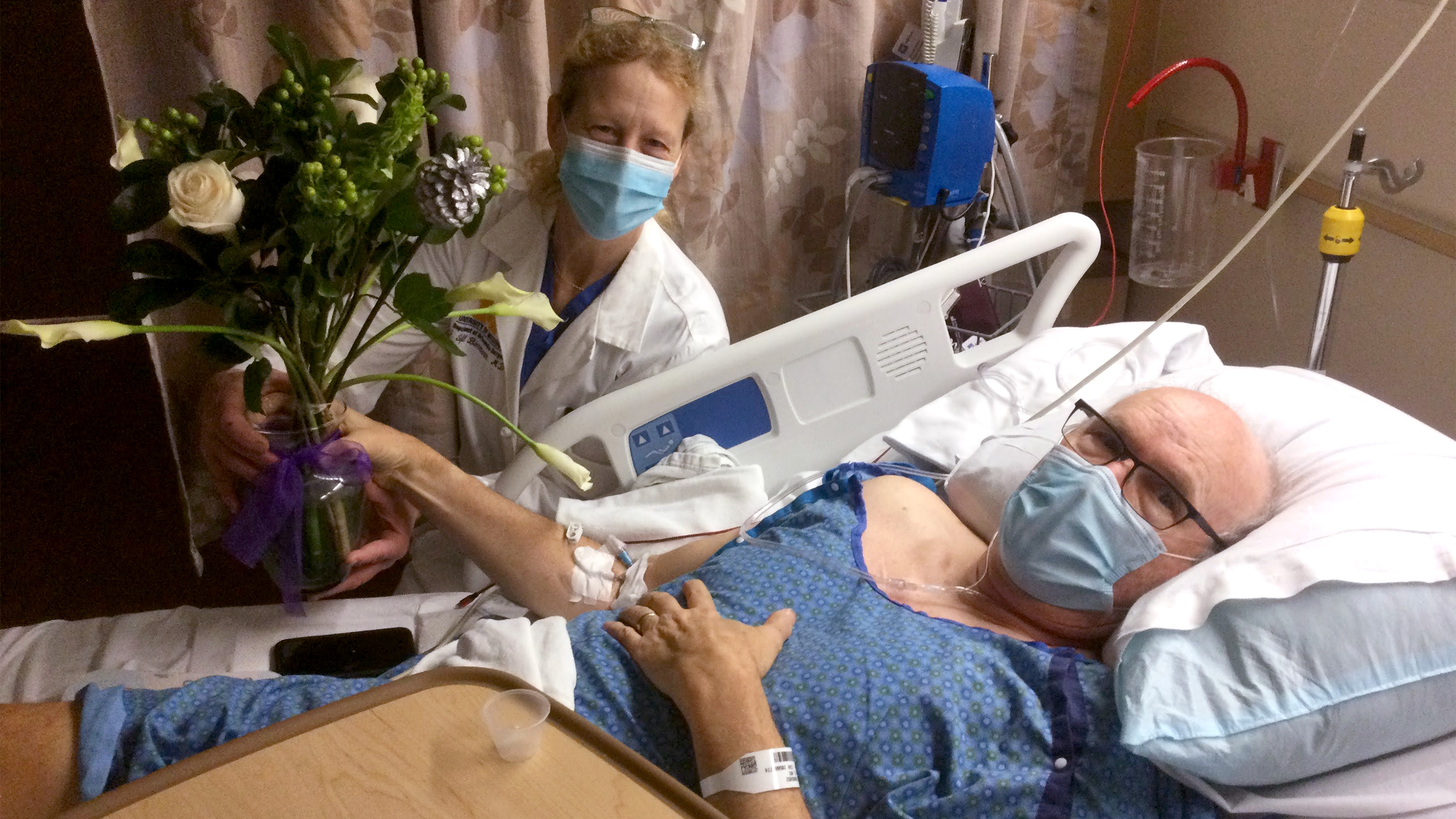In December 2020, the Kolars were taking one of their usual bike rides through Gallup Park in Ann Arbor when they noticed a runner had fallen on a slippery bridge. The pair quickly hit their brakes but proceeded to fall off their bikes. While Candace Kolars was unharmed, Joseph Kolars was in a lot of pain and couldn’t stand up.
After calling 911, EMS arrived to find that not only could Joseph Kolars not stand, but his helmet was cracked. He was quickly whisked away to the University of Michigan Health System Emergency Department for evaluation.
Joseph Kolars had numerous tests run on both his head and his legs. The results revealed that while his helmet had protected his head, his pelvis and femur absorbed the full brunt of the fall.
A series of x-rays and CT scans showed that Joseph Kolars’s right femur had broken through the joint capsule, gone up through his pelvis, which shattered in the process. The staff at the ED quickly started trying to control Kolars’ pain while putting him into traction to pull his femur out of his pelvic area.
“I don’t remember much from the ED, but I do remember them doing everything they could to make me feel comfortable,” said Joseph Kolars. “Everyone who helped me was very efficient.”
After all the ED tests were run, Jaimo Ahn, M.D., an orthopaedic surgeon at Michigan Medicine, assessed the damage of the injury and started working on a plan of operation for Joseph Kolars.
While his injury was severe, Ahn was able to quickly identify the injury as a “high energy” acetabular fracture, a type of fracture that has been researched for decades. Within 24 hours of arriving to the ED, Ahn was able to start working with Joseph Kolars on a plan of action for surgery.
Fixing an injury like this requires a lot of surgical trauma to the body. Almost all surgeries require cutting through muscles and tissues to get to the desired location. The larger the incision, the more trauma, blood loss, risk of infection, and more difficult recovery.
“Surgery is just controlled trauma to the body,” said Ahn. “The less trauma we can cause, the easier it is for the patient to recover.”
Ahn proposed a hybrid procedure that would have a smaller incision and less risk and an easier recovery.
“Dr. Ahn presented this alternative method with lots of confidence,” said Joseph Kolars. “His confidence in the procedure is what convinced me this was the right choice and that it would pan out well.”
This procedure used more indirect methods to bring the pieces back together. Pins were used during the procedure to help steady the bones so they could be put back in place and guide the fixation metal to where it needs to go. The plates and screws were left in the pelvis to help hold the bone where it needs to be and steady the area so Joseph Kolars could start walking again during recovery.
The CT scan that was done before surgery allowed Ahn to see every fracture in full detail down to the millimeter. This allowed for more precise placements of the surgical hardware when it came to the procedure and piecing the pelvic bone back together.
“Some people would describe fracture care as a mix of carpentry and gardening,” said Ahn. “The carpentry aspect is using a hard material that we need to be able to position and fix into place. We are still working with a living organism and need to make sure there is ample blood flow to support what is being done, that is the gardening.
Getting back on the bike
After surgery, Joseph Kolars spent six days in the hospital before being discharged. Even though his wife could not visit due to COVID-related restrictions, she felt kept in the loop about what was going on.
“Dr. Ahn kept good communication with Candace Kolars and was able to inspire confidence in her that this procedure was the right choice,” said Joseph Kolars. “We were both very impressed with the communication from all the staff. Candace Kolars felt like she was being kept in the loop on everything as if she was there.”
Candace Kolars would receive regular phone calls and facetimes from Ahn, the staff, and Joseph Kolars himself to be kept up to date with the care that he was receiving.
Ahn and Joseph Kolars both mentioned that it is not always easy for doctors to be good patients.
“We have a tendency as doctors to feel like we should be leading the critical treatment decisions,” said Ahn. “Joseph Kolars did a great job of being an engaged patient rather than directing care and that engagement can make a real positive difference.”
Before being discharged from the hospital, physical therapy and occupational therapy teams created a specialized plan for Joseph Kolars’s recovery at home. Due to the nature of the injury, Joseph Kolars couldn’t ride in a car, so the therapists were sent to his house one to three times per week help with rehabilitation.
Joseph Kolars was unsure if he would be able to walk again or make a full recovery due to the severity of the injury. Thanks to his care teams, he was able to walk again by April of 2021. Today, Joseph Kolars and his wife still enjoy riding their bikes for as far as 40 miles.
“The care I received from everyone during my stay in the hospital and after was phenomenal,” said Joseph Kolars. “I’m extremely grateful for everyone who worked on my case.”


